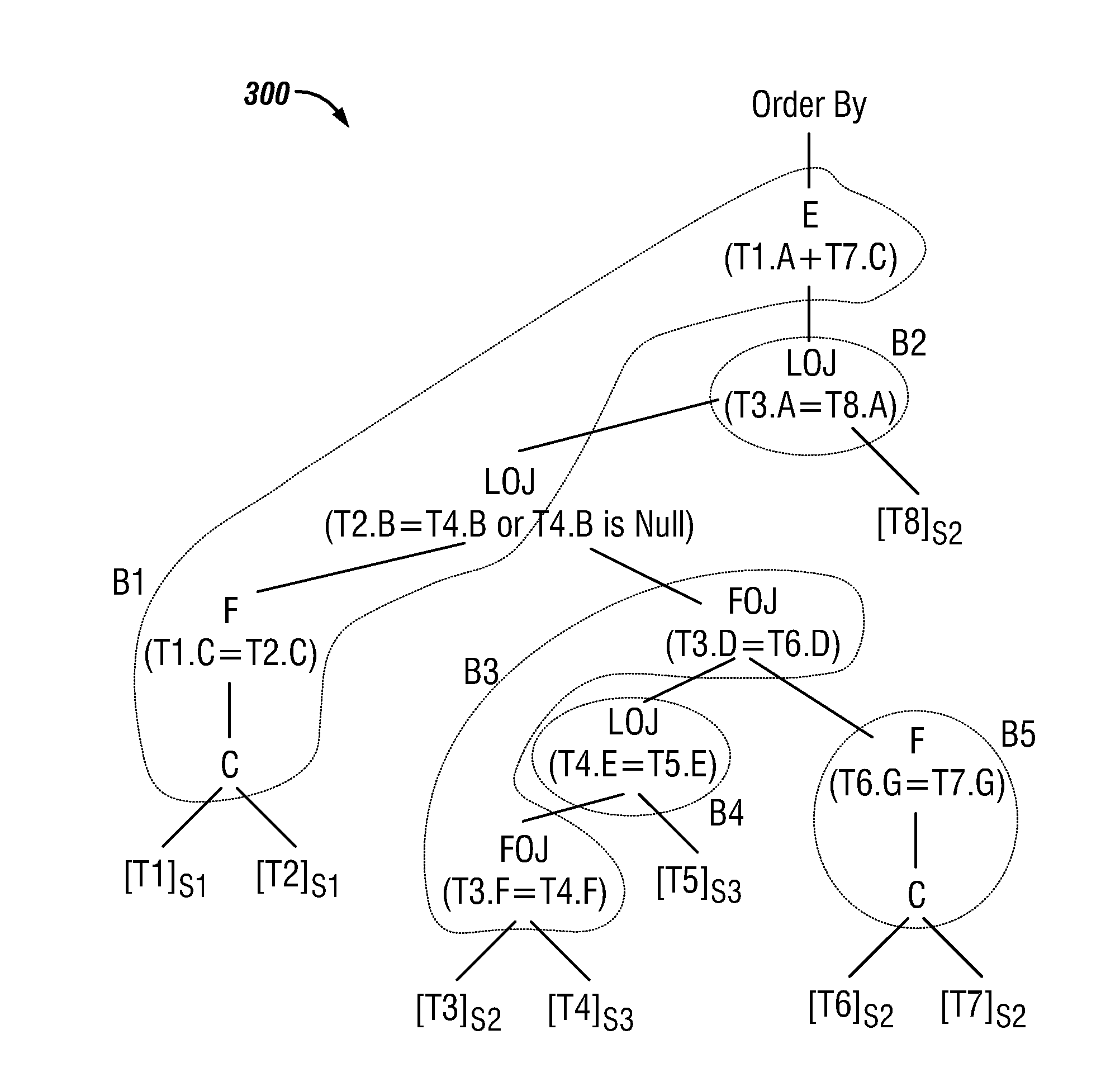Query plan reformulation
a query plan and reformulation technology, applied in the field of query plan reformulation, can solve the problems of increasing source complexity, executing “mega queries, and published literature not providing solutions for supporting mega queries
- Summary
- Abstract
- Description
- Claims
- Application Information
AI Technical Summary
Problems solved by technology
Method used
Image
Examples
case 1
ngs to an LOJ preserved path P of Qtree(AN) whose nodes are in B2. Thus, by Lemma 1 part 1, if N is upward compatible with N1, pushing N upward as a parent of N1 preserves query semantics equivalence.
Case 2: N belongs to an LOJ preserved path P of Qtree(AN) whose nodes are not in B2. By definition of LOJ preserved paths, N is the non outer child of N1 in P and N1 is an LOJnull. Let N3 be the non outer child of N, then by Lemma 4, if Required(N1)∩Output(N3)=Ø, pushing N upward as a parent of N1 preserves query semantics equivalence.
[0162]Assume the existence of B1→B2 with B1 an LOJ block and B2 is an FOJ block. The same reasoning used above can be used to exploit the properties of FOJ preserved paths. Thus, properties P1 and P2 are proved, and ***. It should be noted that CQP is built in one top-down traversal of the query tree. Therefore, the complexity is linear in the number of nodes of the query tree.
[0163]To execute an Abstract Node, the semantics of p-links should be considered...
PUM
 Login to View More
Login to View More Abstract
Description
Claims
Application Information
 Login to View More
Login to View More - R&D
- Intellectual Property
- Life Sciences
- Materials
- Tech Scout
- Unparalleled Data Quality
- Higher Quality Content
- 60% Fewer Hallucinations
Browse by: Latest US Patents, China's latest patents, Technical Efficacy Thesaurus, Application Domain, Technology Topic, Popular Technical Reports.
© 2025 PatSnap. All rights reserved.Legal|Privacy policy|Modern Slavery Act Transparency Statement|Sitemap|About US| Contact US: help@patsnap.com



